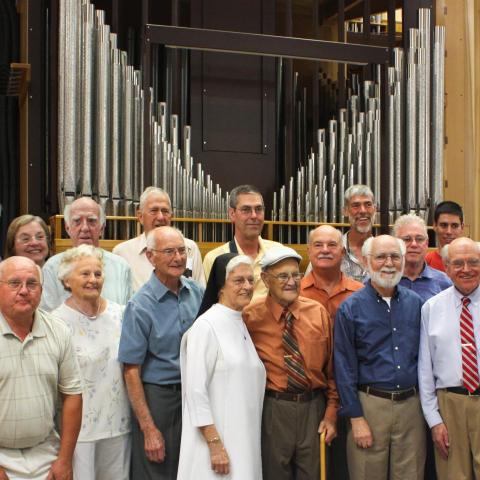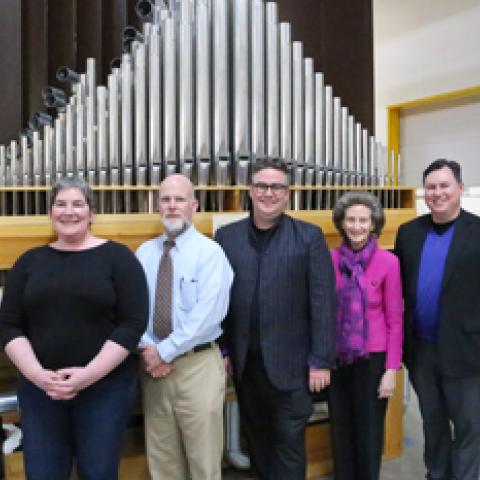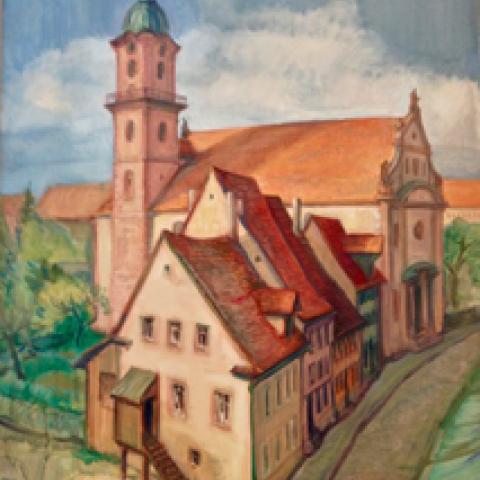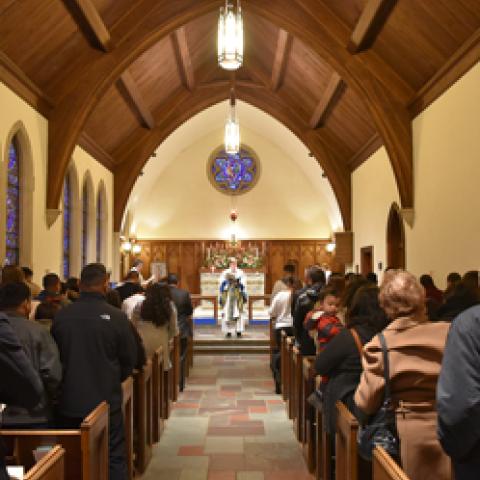
Schoenstein & Co., Benicia, California, celebrated its 140th anniversary with an open house demonstrating the firm’s new organs for Holy Cross Catholic Church, San Jose, California, and Mikell Chapel of the Cathedral of St. Philip, Atlanta, Georgia. The 150 guests were fascinated with the extremely complex arrangement of pipes, windchests, bellows, and wind conductors necessary to fit in the chapel’s small, irregular shaped chamber. “One of our most challenging installation sites!” said company president Jack Bethards.
Twenty-four members of the founding Schoenstein family representing the fourth, fifth, and sixth generations joined the celebration and presented a commemorative glass sculpture for the firm’s archive, which includes Schoenstein records and artifacts dating from the mid-nineteenth century in Germany.
For information: www.schoenstein.com.






